Deepavali, or Diwali, is a festival celebrated by all Hindus to commemorate Lord Rama and his wife, Sita's return to Ayodhya after his 14-year exile. It was a dark night when they first returned hence his people lit their houses with little lamps (diyas) so that Rama and Sita could find their way...
More About Diwali
From Wikipedia, the free encyclopedia
| Diwali / Deepavali | |
|---|---|
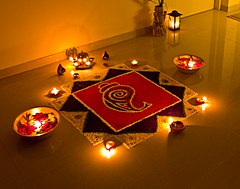
Rangoli decorations, made using coloured powder, are popular during Diwali
| |
| Also called | Deepavali |
| Observed by | Hindus, Sikhs, Jains andBuddhists [1] |
| Type | Indian, Cultural, Seasonal |
| Celebrations | Diya and lighting, home decoration, shopping, fireworks,puja (prayers), gifts, feast and sweets |
| Begins | Dhanteras, 2 days before Diwali |
| Ends | Bhai Dooj, 2 days after Diwali |
| Date | Varies per Hindu Lunisolar calendar |
| 2015 date | 11 November (Wednesday) 10 November (Tuesday) in South India[2] |
| 2016 date | 30 October (Sunday) |
| 2017 date | 21 October (Saturday) |
| Related to | Kali Puja, Diwali (Jainism),Bandi Chhor Divas |
| Part of a series on |
| Hinduism |
|---|
 |
Diwali (or Deepavali, the "festival of lights") is an ancient Hindu festivalcelebrated in autumn (northern hemisphere) or Spring (southern hemisphere) every year.[3][4] Diwali is one of the largest and brightest festivals in India. The festival spiritually signifies the victory of good over evil.[5][6][7] The preparations and rituals typically extend over a five-day period, but the main festival night of Diwali coincides with the darkest, new moon night of the Hindu Lunisolar month Kartika. In the Gregorian calendar, Diwali falls between mid-October and mid-November.
Before Diwali night, people clean, renovate, and decorate their homes and offices.[8] On Diwali night, Hindus dress up in new clothes or their best outfit, light up diyas (lamps and candles) inside and outside their home, participate in family puja (prayers) typically to Lakshmi – the goddess of wealth and prosperity. After puja, fireworks follow,[9] then a family feast including mithai(sweets), and an exchange of gifts between family members and close friends. Deepavali also marks a major shopping period in nations where it is celebrated.[10]
Diwali is an important festival for Hindus. The name of festive days as well as the rituals of Diwali vary significantly among Hindus, based on the region of India. In many parts of India,[11] the festivities start with Dhanteras(in Northern & Western part of India), followed by Naraka Chaturdasi on second day, Deepavali on the third day, Diwali Padva dedicated to wife–husband relationship on the fourth day, and festivities end with Bhau-beejdedicated to sister–brother bond on the fifth day. Dhanteras usually falls eighteen days after Dussehra.
On the same night that Hindus celebrate Diwali, Jains celebrate a festival of lights to mark the attainment of moksha by Mahavira,[12][13] and Sikhscelebrate Bandi Chhor Divas. Diwali is an official holiday in Nepal, India,[14]Sri Lanka, Mauritius, Guyana, Trinidad and Tobago, Suriname, Malaysia,Singapore and Fiji.
Etymology
| |||||||||
Diwali is derived from the Sanskrit fusion word Dīpāvali, formed from dīpa (दीप, "light" or "lamp"[18][19]) and āvalī (आवली, "series, line, row"[20]). Dīpāvali or Deepavali thus meant a "row" or "series of lights".[21] Its celebration include millions of lights shining on housetops, outside doors and windows, around temples and other buildings in the communities and countries where it is observed.[15]
Diwali (English pronunciation: /dɨˈwɑːliː/)[3] is variously named and spelled/pronounced in diverse languages of India: 'deepabali' (Odia: ଦିପାବଲି), 'deepaboli' (Bengali: দীপাবলি), 'deepavali' (Assamese: দীপাৱলী, Kannada: ದೀಪಾವಳಿ, Malayalam:ദീപാവലി, Tamil: தீபாவளி and Telugu: దీపావళి), 'divali' (Gujarati: દિવાળી, Hindi: दिवाली,Marathi: दिवाळी,Konkani:दिवाळी, Punjabi: ਦੀਵਾਲੀ), 'diyari' (Sindhi: दियारी), and 'tihar' (Nepali: तिहार).
History
Diwali dates back to ancient times in India, as a festival after the summer harvest in the Hindu calendar month of Kartika. The festival is mentioned in Sanskrit scriptures such as the Padma Purana, the Skanda Purana both completed in second half of 1st millennium AD but believed to have been expanded from a core text from an earlier era. The diyas(lamps) are mentioned in Skanda Purana to symbolically represent parts of sun, the cosmic giver of light and energy to all life, who seasonally transitions in the Hindu calendar month of Kartik.[16][22] Hindus in some regions of India associate Diwali with the legend of Yama and Nachiketa on Kartika amavasya (Diwali night).[23] The Nachiketa story about right versus wrong, transient wealth versus true wealth, ignorance versus knowledge is recorded in Katha Upanishadcomposed in 1st millennium BC.[24]
King Harsha in the 7th century Sanskrit play Nagananda mentions Deepavali as Deepapratipadutsava, where lamps were lit and newly engaged brides and grooms were given gifts.[25][26] Rajasekhara referred to Deepavali as Dipamalikain his 9th century Kavyamimamsa, wherein he mentions the tradition of homes being whitewashed and oil lamps decorating homes, streets and markets in the night.[25] The Persian traveller and historian Al Biruni, in his 11th century memoir on India, wrote Deepavali being celebrated by Hindus on New Moon day of the month of Kartika.[27]
Significance
Diwali is one of the happiest holidays in Nepal and India with significant preparations. People clean their homes and decorate them for the festivities. Diwali is one of the biggest shopping seasons in Nepal and India; people buy new clothes for themselves and their families, as well as gifts, appliances, kitchen utensils, even expensive items such as cars and gold jewelry.[28] People also buy gifts for family members and friends which typically include sweets, dry fruits, and seasonal specialties depending on regional harvest and customs. It is also the period when children hear ancient stories, legends, myths about battles between good and evil or light and darkness from their parents and elders. Girls and women go shopping and create rangoli and other creative patterns on floors, near doors and walkways. Youth and adults alike help with lighting and preparing for patakhe (fireworks).[17][29]
There is significant variation in regional practices and rituals. Depending on the region, prayers are offered before one or more deities, with most common being Lakshmi – the goddess of wealth and prosperity. On Diwali night, fireworks light up the neighborhood skies. Later, family members and invited friends celebrate the night over food and sweets.[17][29]
Spiritual significance
Diwali is celebrated by Hindus, Jains, and Sikhs to mark different historical events, stories or myths but they all symbolise the victory of light over darkness, knowledge over ignorance, good over evil, hope over despair.[5][30][31]
The Yoga, Vedanta, and Samkhya schools of Hindu philosophy share the belief that there is something beyond the physical body and mind which is pure, infinite, and eternal, called the Atman. The celebration of Diwali as the "victory of good over evil" refers to the light of higher knowledge dispelling all ignorance, the ignorance that masks one's true nature, not as the body, but as the unchanging, infinite, immanent and transcendent reality. With this awakening comes compassion and the awareness of the oneness of all things, and knowledge overcomes ignorance. Diwali is the celebration of this inner light over spiritual darkness,[32][33] knowledge over ignorance, right over wrong, good over evil.[34][35]
Hinduism
The religious significance of Deepavali varies regionally within India, depending on the school of Hindu philosophy, regional myths, legends, and beliefs.
Many wrongly see Diwali as honouring the return of the god Rama, his wife Sitaand his brother Lakshmana from exile of 14 years. As told in the ancient Hindu epic Ramayana of Valmiki, Lord Rama returned from exile on the Shukla Paksha day of Navami in the Hindu month of Chaitra month. [36] It is wrongly believed that Diwali is also celebrated to marks the return of Pandavas after 12 years ofVanvas and one year of agyatavas in the other ancient Hindu epic Mahabharata. The Pandavas returned to a desolate kindgom without any celebrations as the entire Kaurava and Pandava armies were destroyed except for twelve personalities namely Sri Krishna, the five Pandavas, Satyaki, Yuyutsi, Ashwatthama, Kritavarma, Kripacharaya and Vrishketu. Deepavali is linked to the celebration of Lakshmi, the goddess of wealth and prosperity, and wife of the godVishnu. The five day festival of Diwali begins on the day Lakshmi was born fromthe churning of cosmic ocean of milk by the gods and the demons; the night of Diwali is the day Lakshmi chose Vishnu as her husband and then married him.[16][37] Along with Lakshmi, devotees make offerings to Ganesha who symbolizes ethical beginnings and fearless remover of obstacles; Saraswati who symbolizes music, literature and learning; and Kubera who symbolizes book keeping, treasury and wealth management.[16] Other Hindus believe that Diwali is the day Vishnu came back to Lakshmi and their abode in the Vaikuntha; so those who worship Lakshmi receive the benefit of her good mood, and therefore are blessed with mental, physical and material well-being during the year ahead.[38]
Hindus in India's eastern region, such as Odisha and West Bengal, worship the goddess Kali instead of Lakshmi, and call the festival Kali Puja.[39][40] In India's Braj and north central regions, the god Krishna is recognized. People mark MountGovardhan, and celebrate legends about Krishna. In other regions, the feast of Govardhan Puja (or Annakoot) is celebrated, with 56 or 108 different cuisines prepared, offered to Krishna, then shared and celebrated by the local community.
In West and certain Northern parts of India, the festival of Diwali marks the start of a new Hindu year.
Sikhism
Main article: Bandi Chhor Divas
Diwali for Sikhs marks the Bandi Chhor Divas, when Guru Har Gobind freed himself and Hindu Kings, from Fort Gwalior, from the prison of the Mughal emperor, Jahangir, and arrived at the Golden Temple in Amritsar. Ever since then, Sikhs celebrate Bandi Choorh Divas, with the annual lighting up of Golden Temple, fireworks and other festivities.
Jainism
Main article: Diwali (Jainism)
Diwali has special significance in Jainism. Mahavira, the last of the Tirthankar of this era, attained Nirvana on this day atPavapuri on 15 October 527 BCE, on Chaturdashi of Kartika. According to the Kalpasutra by Acharya Bhadrabahu, 3rd century BC, many gods were present there, illuminating the darkness.[30] Therefore, Jains celebrate Diwali as a day of remembering Mahavira.
Description and Rituals
Diwali is a five-day festival in many regions of India, with Diwali night centering on the new moon – the darkest night – at the end of the Hindu lunar month of Ashvin and the start of the month of Kartika. In the Common Era calendar, Diwali typically falls towards the end of October, or first half of November each year. The darkest night of autumn lit with diyas, candles and lanterns, makes the festival of lights particularly memorable.[41] Diwali is also a festival of sounds and sights with fireworks and rangoli designs; the festival is a major celebration of flavors with feasts and numerous mithai (sweets, desserts),[21] as well as a festival of emotions where Diwali ritually brings family and friends together every year.[17][29]
Rituals and preparations for Diwali begin days or weeks in advance. The festival formally begins two days before the night of Diwali, and ends two days thereafter. Each day has the following rituals and significance:[16][42][43]
- Dhanteras
Main article: Dhanteras
Dhanteras (celebrated in Northern and Western part of India) starts off the five day festival. Starting days before and through Dhanteras, houses and business premises are cleaned, renovated and decorated. Women and children decorate entrances with Rangoli – creative colourful floor designs both inside and in the walkways of their homes or offices. Boys and men get busy with external lighting arrangements and completing all renovation work in progress. For some, the day celebrates the churning of cosmic ocean of milk between the forces of good and forces of evil; this day marks the birthday of Lakshmi – the Goddess of Wealth and Prosperity, and the birthday of Dhanvantari – the God of Health and Healing. On the night of Dhanteras, diyas (lamps) are ritually kept burning all through the nights in honor of Lakshmi and Dhanvantari.[16][37]
Dhanteras is also a major shopping day, particularly for gold or silver articles. Merchants, traders and retailers stock up, put articles on sale, and prepare for this day. Lakshmi Puja is performed in the evening. Some people decorate their shops, work place or items symbolizing their source of sustenance and prosperity.
- Naraka Chaturdasi
Main article: Naraka Chaturdashi
Narak Chaturdasi is the second day of festivities, and is also called Choti Diwali. Typically, house decoration and colourful floor patterns called rangoli are made on or before Narak Chaturdasi. Special bathing rituals such as a fragrant oil bath are held in some regions, followed by minor pujas. Women decorate their hands with henna designs. Families are also busy preparing homemade sweets for main Diwali.[5][16]
- Lakshmi Puja
Main article: Lakshmi Puja
The third day is the main festive day. People wear new clothes or their best outfits as the evening approaches. Thendiyas are lit, pujas are offered to Lakshmi, and to one or more additional deities depending on the region of India; typically Ganesha, Saraswati, and Kubera.[16] Lakshmi symbolises wealth and prosperity, and her blessings are invoked for a good year ahead.[44]
Lakshmi is believed to roam the earth on Diwali night. On the evening of Diwali, people open their doors and windows to welcome Lakshmi, and place diya lights on their windowsills and balcony ledges to invite her in. On this day, the mothers who work hard all year, are recognized by the family and she is seen to embody a part of Lakshmi, the good fortune and prosperity of the household.[21] Small earthenware lamps filled with oil are lighted and placed in rows by some Hindus along the parapets of temples and houses. Some set diyas adrift on rivers and streams. Important relationships and friendships are also recognized during the day, by visiting relatives and friends, exchanging gifts and sweets.[5][6][45]
After the puja, people go outside and celebrate by lighting up patakhe (fireworks). The children enjoy sparklers and variety of small fireworks, while adults enjoy playing with ground chakra, Vishnu chakra, flowerpots (anaar), sutli bomb, rockets and bigger fireworks.[46] The fireworks signify celebration of Diwali as well a way to chase away evil spirits.[47][48]After fireworks, people head back to a family feast, conversations and mithai (sweets, desserts).[16]
- Padwa, Balipratipada
Main article: Balipratipada
The day after Diwali, is celebrated as Padwa. This day ritually celebrates the love and mutual devotion between the wife and husband.[16] The husbands give thoughtful gifts, or elaborate ones to respective spouses. In many regions, newly married daughters with their husbands are invited for special meals. Sometimes brothers go and pick up their sisters from their in-laws home for this important day. The day is also a special day for the married couple, in a manner similar to anniversaries elsewhere in the world. The day after Diwali devotees perform Goverdhan puja in honor of Lord Krishna.
Diwali also marks the beginning of new year, in some parts of India, where the Hindu Vikram Samvat calendar is popular. Merchants and shopkeepers close out their old year, and start a new fiscal year with blessings from Lakshmi and other deities.
- Bhai Duj, Bhaiya Dooji
Main article: Bhau-beej
The last day of festival is called Bhai dooj (Brother’s second) or Bhai tika in Nepal, where it is the major day of the festival. It celebrates the sister-brother loving relationship, in a spirit similar to Raksha Bandhan but with different rituals. The day ritually emphasizes the love and lifelong bond between siblings. It is a day when women and girls get together, perform a puja with prayers for the well being of their brothers, then return to a ritual of food-sharing, gift-giving and conversations. In historic times, this was a day in autumn when brothers would travel to meet their sisters, or bring over their sister’s family to their village homes to celebrate their sister-brother bond with the bounty of seasonal harvests.[16]
Festival of peace
On this festive occasion, Hindu, Jain and Sikh communities also mark charitable causes, kindness, and for peace. For example, at the international border, every year on Diwali, Indian forces approach Pakistani forces and offer traditional Indian sweets on the occasion of Diwali. The Pakistani soldiers anticipating the gesture, return the goodwill with an assortment of Pakistani sweets.[49]




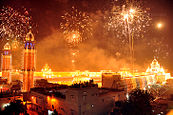
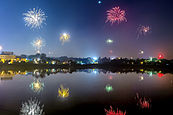
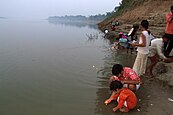

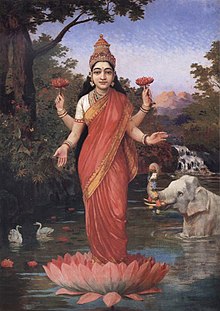

No comments:
Post a Comment